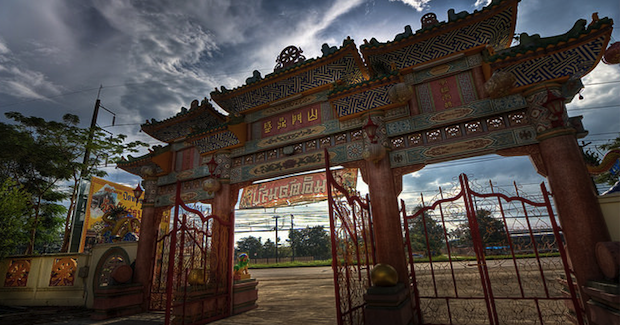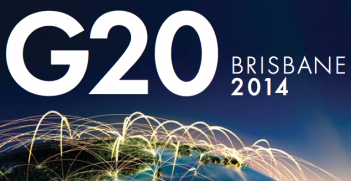Australia's Prospects on China's New Silk Road

The economies of Australia and China are highly complementary and both countries enjoy a good and productive economic relationship. The upgrading of diplomatic ties to a comprehensive strategic partnership and the China-Australia Free Trade Agreement have paved the way for enhanced Australia-China cooperation within the framework of the One Belt One Road initiative.
Thanks to the China-Australia Free Trade Agreement (ChAFTA), more than 85 per cent of Australia’s goods exported to China (by value in 2015) now enter duty free or at preferential rates. This level will rise to 93 per cent by 1 January 2019 and 97.9 per cent by 1 January 2029 when ChAFTA is fully implemented. Besides the easing of trade tariffs, investment facilitated through ChAFTA will increase the availability and access to capital and this can be used to support Chinese One Belt, One Road projects of national significance in both countries.
In October, the inaugural infrastructure senior business leaders’ delegation organised by the Australia China One Belt One Road Initiative (ACOBORI) visited China to explore how Australian industries could get more involved in what is also called the Belt and Road initiative. This delegation was led by ACOBORI advisory board member, and former Minister for Trade, Andrew Robb.
During the three-day visit, the delegation had comprehensive discussions with the head of the belt and road leading group office, the vice-minister of the Chinese Ministry of Commerce, key Chinese industry bodies, more than 50 senior business leaders from major Chinese state-owned enterprises and private groups as well as more than 20 senior finance leaders from the Asian Infrastructure Investment Bank (AIIB), the Silk Road Fund, and Chinese commercial banks. This is the first Australian business delegation to China actively pursuing participation in the One Belt, One Road initiative.
China is focused on building six major economic cooperation corridors as part of the One Belt, One Road initiative. Considering Australia’s comparative advantages and business distribution, the China-Indochina Peninsula economic corridor and Bangladesh-China-India-Myanmar (BCIM) economic corridor, are the greatest opportunities. In other words, Southeast Asian countries should be the main focus for Australian industries to engage with the Belt and Road initiative.
The China-Indochina Peninsula economic corridor will link the 21st century maritime Silk Road route with the Greater Mekong Sub-Region (GMS). It will connect major sea ports along the coasts of Vietnam, Cambodia, Thailand and Myanmar. Currently, the countries along the Mekong River are engaged in building nine cross-national highways. This includes the north-south economic corridor linking China’s Kunming to Laos and Thailand, which opened in 2013 (reaching a total length of 2,000 kilometres); as well as the Singapore-Kunming Railway, which is currently under construction.
The sections connecting China with Vietnam, and China with Myanmar and Laos are also underway. The BCIM economic corridor will connect India’s northeast with Bangladesh, Myanmar and southwest China through a network of roads, railways, waterways, and airways under an agreed and understood regulatory structure. The corridor is considered to be a modern version of the Silk Road and a revision of the 1999 Track II Kunming Initiative between BCIM countries. It will originate in Kunming and connect to Kolkata in India, linking Mandalay in Myanmar; and Dhaka and Chittagong in Bangladesh.
Shouwen Wang, the Chinese vice-minister of commerce addressed Australia’s potential for cooperation when meeting with Australian delegates in Beijing: “Many Belt and Road projects are long-term projects [that require] a large amount of loans and top-class design and monitoring services…are keenly needed to secure the best quality of the projects. This will offer the potential for Australian asset managers, financiers, advisors and investors to cooperate with [their] Chinese counterparts to leverage each other’s experience and successfully deliver infrastructure along the route and beyond.”
Indeed, Australia’s world-leading public-private partnership development experience and its position as the fifth biggest stakeholder of the AIIB means promising prospects and huge potential for cooperation and jointly developing the international market with China. Particularly, Australia’s financial services sector, professional and management consulting, and technical trade-related businesses have a world reputation and good reach into Southeast Asia. All could play an important role in implementing the Belt and Road projects.
In order to enhance the cooperation and tap into their potential in developing the third-party market, the two countries need to identify and further discuss how to make use of their respective advantages. However, it will be a time-consuming and painstaking job for Australian industry to seek cooperation with Chinese counterparts one by one. A practical way is to utilise platforms and organisations that could make effective contacts with top Chinese companies or government agencies. The other way is to develop relationships with the leading companies in the industrial zones, most of which are private. The industrial zones act as the cooperation platforms for the Belt and Road initiative, and around 46 such zones have been established in countries along the Belt and Road to date.
Jean Dong is the executive director of the Australia China One Belt One Road Initiative (ACOBORI).
Xu Wang is a research associate at ACOBORI. Hi is also a visiting research fellow at the Perth USAsia Centre.
This article is published under a Creative Commons Licence and may be republished with attribution.





